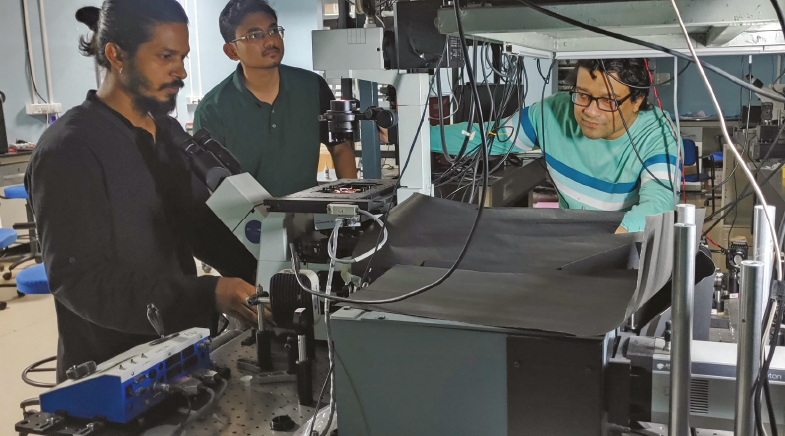Hue's that for toxic smell?
-
- from Shaastra :: vol 04 issue 08 :: Sep 2025

Colour us amazed! This simple and pocket-friendly device sniffs out toxic gases in the air by changing colour.
It's a small, hand-held grid of colourful squares embossed on paper. These squares can sniff out the presence of poisonous gases in the air, and also indicate the concentration of their toxicity.
A team from the Defence Research and Development Establishment (DRDE) has created a simple, pocket-friendly optoelectronic nose using just adhesive paper, colourimetric reagents and silica particles to "sniff" out the presence of poisonous gases, many of which are odourless and colourless. The squares in the grid change colour in the presence of different chemicals. The presence and concentration of the substances can be determined by the change in colour and intensity of the squares (bit.ly/colour-poison). "With 36 coloured squares, a single grid can detect the presence of various chemicals. None of them will interact with each sensor in the same way. Thus, it generates the fingerprint of each chemical," explains Vijay Tak, corresponding author and researcher at the DRDE's VERTOX laboratory in Gwalior, which studies hazardous chemical and biological agents.
The researchers are refining the prototype to achieve better stability at room temperature. Its applications for real-world challenges are many.
Odourless and colourless gases can be detected through electronic devices, which are expensive and not easily portable. Optoelectronic devices replace the electronic component with a colour-changing material. The technology is not new: optoelectronic noses were introduced in 2009. However, there was no technology to fabricate mass-produced single-use readers at pocket-friendly costs. Tak's team used a well plate that resembles a painting palette, and filled each slot with mesoporous silica particles. They impregnated each of these squares with a different colourimetric reagent to get a grid of 36 unique squares. Then they covered the entire construct with a sheet of paper and flipped it like an upside-down pudding. The reagent-infused silica squares got embossed onto the paper. For better structural support, they stuck a strip of metal sheet to the sticky side of the paper. The total cost of the device is less than a rupee.
The researchers are refining the prototype to achieve better stability at room temperature. Its applications for real-world challenges are many. "With a range of indicators, supports and imprinting methods, better and more affordable sensor arrays could be prepared," says T. Pradeep, Professor of Chemistry at the Indian Institute of Technology Madras. "This discovery, at some point in time, may become a patch on the shirt of children going to school or workmen in factories, and read by machines to assess safety for all," he elaborates.
Have a
story idea?
Tell us.
Do you have a recent research paper or an idea for a science/technology-themed article that you'd like to tell us about?
GET IN TOUCH














